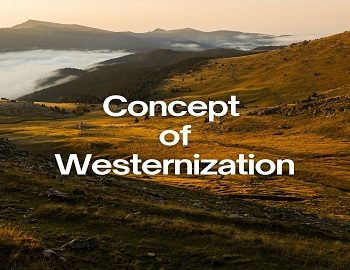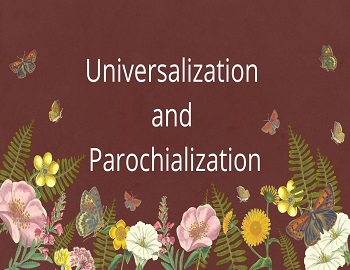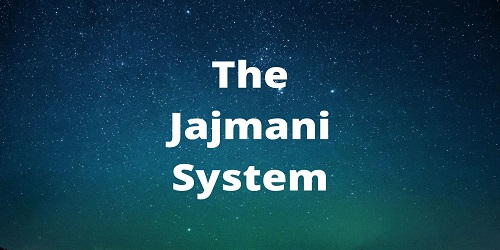Table of Contents
Caste System in India:
There are books, treatise, theses and theories galore on the Indian Caste System. There is hardly an Indologist or a social scientist who has not contributed his mite to understand the caste system’s intricacies and unravel its origin.
What is Caste?
Caste is an endogamous social group having a specific position in a social hierarchy on the basis of some fixed occupation, is guided by rules of social intercourse and commensality, and to which a person belongs since birth.
In India, caste has been the basis of social stratification and any effort towards understanding Indian Society, its structure and organization, must take into account the caste system.
Theories on the Origin of Caste:
A number of theories have been put forward to explain the origin of caste. Earlier, it was tried to explain as an expansion of the Varna System but no clear transition from Varna to caste could be traced. Moreover, ideally, the two are organized on two entirely different principles Varna by profession and caste by birth. Also, there were only four varnas while at present there are above four thousand castes. We shall briefly go through each of the theories-
- Racial Theory- Propounded by Herbert Risley and D.N. Majumdar, this theory seeks to explain the origin of the caste system in the proliferation of different races who have entered India after the Aryans. Each race, and the resultant race after they intermixed, gave birth to a new caste.
- Brahmanic Theory- Put forward by G.S. Ghurye, the theory seeks to trace the origin of the caste system to the Brahmanic influence and their concept of purity and pollution, conceived to gain political ascendancy.
- Occupational Theory- Nesfield explains the origin of caste in terms of occupation. Many castes derive their names by the work they do, such as Chamar, Lohar, Sonar, Teli etc.
- Mana Theory- ‘Mana’ is a word to denote impersonal supernatural power supposed to be diffused in nature and permeating all animate and inanimate objects. J.H. Hutton is of the view that the caste system originated in the belief in Mana of non-Aryan groups, who practised untouchability, endogamy etc. to neutralize the evil effects of Mana.
- Religious Theory- Hocart believes that religious beliefs and customs are at the root of the caste system. The early Hindu Concept of Dharam, which had a connotation of duty also for each group base on the profession. This later on crystallized into the caste system.
In addition, there were many more theories that seek to explain the origin of the caste system. It is apparent that all these only touches upon one or two aspects of the caste system and are easily refuted with reference to other aspects. For example- though belief in Mana is universal, why should it give rise to the caste system only in India? Similarly, the number of castes is far greater than the number of occupations. It can be said that a perfect explanation of the caste system is yet to be found out.
Features of Caste System:
The following are the main characteristics of caste system-
- Caste is determined by birth- The membership of caste is determined by birth. A person remains the member of the caste into which he is born and his membership does not undergo any change even if changes in his status, occupation, education, wealth etc. take place.
- Caste is endogamous- A strict endogamy is one of the most important features of caste. Every caste or sub-caste permits marriage within the group. The system has been so rigid that traditionally inter-caste marriages were prohibited. Even today endogamy is quite rigidly followed.
- Caste is hierarchical- Every caste has a fixed position in the social order, in which Brahmins are at the top, the Shudras are at the bottom and others are in between the two with varying degrees of respectability.
- Caste has an occupation- Occupation of each caste is predetermined by birth and every caste is supposed to treat its occupation as a religious duty.
- Rules of Commensality- Sharing or acceptance of food and water is governed by detailed rules. Severe restrictions are found in eating and social intercourse. Food has been divided into Pucca food (fried) and Kuccha food (boiled) and well-defined rules are followed in the matters of who accepts from whom.
- Religious Sanction- The inequalities and differentiation among the caste has been given religious sanction by explaining these through the doctrine of karma and rebirth.
- Division of labour- Each caste having an occupation, the system functions quite efficiently in a rural, agricultural economy. Every economic activity is assigned to a specific caste- Ironsmith, Potter, Carpenter, Leatherworker, Washermen, Goldsmith, Oilmonger, Grocer, Cleaner, Scavenger, Barber, Religious functionary etc. Each caste thus is a part of the whole society and integrated as a system, in other words, the caste system is a social expression of an economic system based on agriculture.
- Caste Councils- The existence of caste panchayats having the authority to compel obedience from their members is also an important feature of the caste system. The violation of all sorts of taboos is dealt with by these caste councils. Using its socio-political authority it can outcaste or excommunicate any of its members.
Disintegration of Caste System:
- Urbanization and Industrialization- These twin processes have done the most damage to the caste system. The system presupposes a rural self-sufficient economy, a cottage industry and more or less socio-political autonomy of villages. The different occupation groups produced and manufactured, enough to meet the local demand. When mass-produced and cheaper articles arrived, the traditional artisans went out of business. These newly unemployed had to seek employment in urban and industrial centres which were simultaneously springing up. The village lost their self-sufficiency and the economic base of the caste system was broken.
- Democracy- The introduction of democracy in India with its emphasis on social equality, abolition of untouchability and devolution of political power to the masses was another blow to the caste system based on precisely the opposite principles. Earlier political power was exclusively vested in a few upper castes who used this as a lever to promote their own interests and to keep the caste system intact.
- Education- The inequalities and exploitation inherent in the caste system survived for thousands of years also because lower castes, with deep-rooted faith in religion and belief in the theory of karma and rebirth, accepted their lot with passive resignation. Modern education with an emphasis on secular, socialist, liberal outlook has changed the perception and basic attitude of people. Moreover, a generation of city dwellers, who have never seen village life and who by virtue of education are now holding a key position in government, bureaucracy, judiciary etc. or also contributing to the undermining of the caste system.
- Transport and Communication- The introduction of roadways and railways, radio, newspapers, telephone, television, airways etc. has opened up vast possibilities of greater mobility, which was earlier denied to the lower caste poor artisans and landless labourers. They were forced to their places due to a lack of alternatives, both in idea and in training.
- Judiciary- The introduction of the modern judicial system, making all citizens equal in the eyes of the law and provision of similar punishment for similar offences irrespective of the offender’s caste, has given much needs impetus to the oppressed to raise their voices. The stranglehold of caste panchayats has also weakened considerably. All these factors together in combination have caused the disintegration of the caste system.
What is Casteism?
While the caste system is waning, casteism is waxing. It may be defined as a blind loyalty to one’s caste to the exclusion of other castes, and unduly promoting and safeguarding the interests of members of their own caste at the cost of others. The growing competition for the limited position of powers and prestige by securing lucrative positions in government administration for near relatives, friends and supporters has given new impetus to the maintenance of caste as a viable social group. The provision of reservation in the Government jobs on the basis of caste and political expediency of creating and maintaining vote banks along caste lines are some of the factors promoting casteism.









Comments (No)